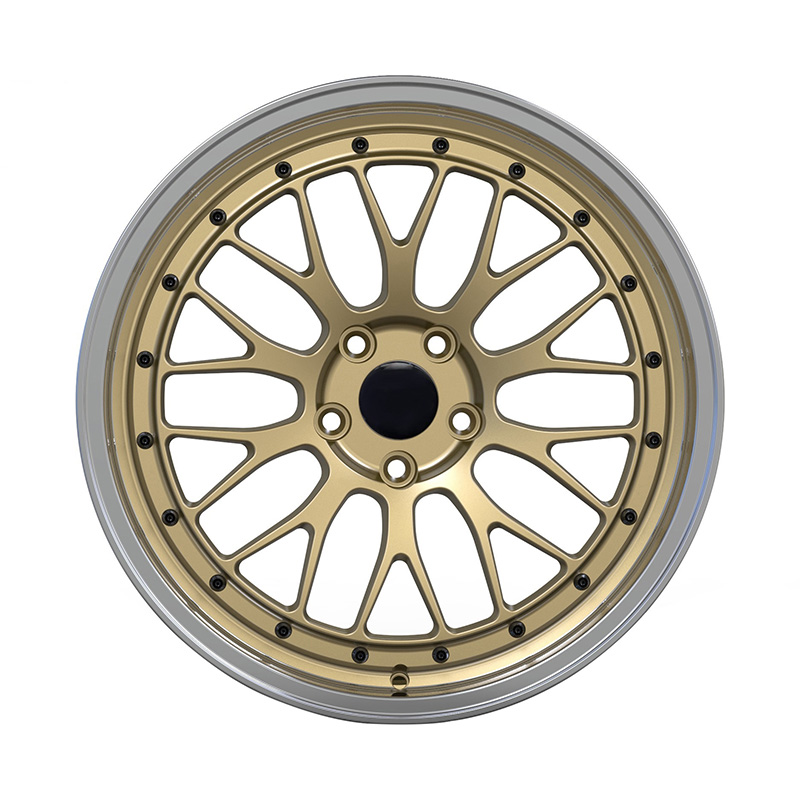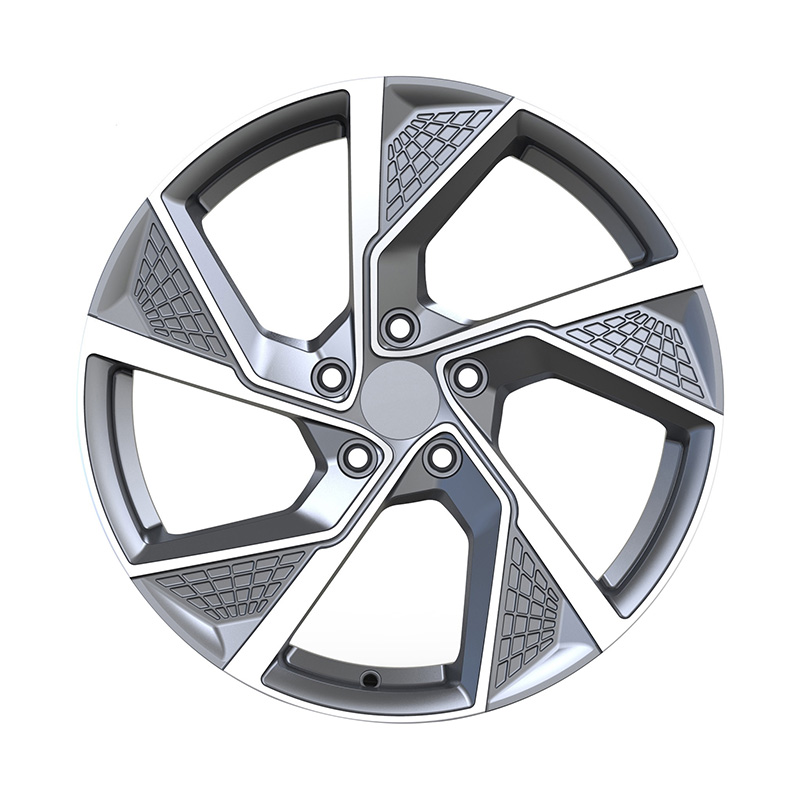-
Introducing the Zhenlun Polish Electroplating 6061-T6 Aluminum Alloy 2-Piece Forged Wheels. These wheels are crafted from high-quality 6061-T6 aluminum alloy, known for its superior strength and durability. The 2-piece forged design ensures enhanced performance and a sleek, polished electroplated finish. Perfect for both style and function, these wheels offer a nice balance of lightweight construction and robust performance, making them an ideal choice for automotive enthusiasts looking for both aesthetics and reliability.
Feature:
The 2-Pieces Forged wheel has ten spokes split. One round rivet design makes it look sophisticated and beautiful. At the same time using electroplating polishing process, to add more fashion sense and movement to the vehicle. This wheel is popular with car owners who like JDM and lowriders, and it is recommended for many sports cars especially Japanese cars. The delicate two-piece wheels retain strength and reliability.Compared to the monoblock wheel, the double-piece wheel will be heavier, it can be thought of as a wheel made up of two wheels. But for some car owner who likes retro styles, for the needs of the deep dish or deep lip wheel of the car, the two-piece can better meet their needs. We can adjust and customize the structure of the spokes, and color of the wheels, and put your own letters on the wheel as your needs.
Furthermore, the material of our 2-piece forged wheel also uses high quality forging blanks which offer higher strength, better heat dissipation, better ductility, and lightweight than cast and flow forming wheels, so it not only offers a more refined look but also improves performance and security for you.
-
Material: 6061t6-aluminum alloy
Color: Electroplating polish
ET: Customized
PCD: Customized
Style: 2 Piece Wheel
Finish: Polish rim with coating disc
Size: 18-24inches -

Submit
Submit feedback

-
Dec 12,2025How Is Lightweighting Influencing Aluminum Alloy Wheel Designs? Lightweighting ...Read More
-
Dec 05,2025The Visual Appeal Of Deeply Recessed Wheel Rims The deep concave wheel is both a...Read More
-
Nov 26,2025Monoblock forged wheels have become a top-tier upgrade in the automotive modific...Read More
Industry Knowledge Exhibition
6061-T6 aluminum is one of the commonly used alloys in the manufacturing of high-performance wheels, especially for automotive applications. Its popularity stems from a unique combination of strength, lightness, and resistance to corrosion. In the context of wheels, particularly for cars, motorcycles, and even bicycles, 6061-T6 aluminum wheels are valued for their ability to deliver high performance while maintaining a durable and lightweight profile.
6061-T6 aluminum is an alloy made primarily of aluminum, magnesium, and silicon. The "T6" designation refers to the heat treatment process that hardens the material, enhancing its strength and toughness. This treatment involves heating the alloy to a high temperature and then rapidly cooling it, followed by an aging process to increase its hardness. As a result, 6061-T6 aluminum achieves a strength-to-weight ratio, making it ideal for applications where both strength and weight reduction are crucial, such as in motorsports, high-performance street cars, and off-road vehicles.
The main function of 6061-T6 aluminum wheels is to reduce the overall weight of a vehicle while maintaining exceptional strength. Lighter wheels reduce the unsprung weight, which improves vehicle handling, acceleration, and braking performance. This is particularly important in racing or high-performance driving, where every pound saved contributes to faster lap times and improved control. The lighter wheels also allow for a more responsive suspension system, enhancing a vehicle’s ability to absorb bumps and respond to steering input more quickly.
In addition to strength and lightness, 6061-T6 aluminum is highly resistant to corrosion, making it suitable for use in all weather conditions. This property is particularly beneficial for vehicles exposed to harsh environments, such as coastal areas where salty air and road treatments can cause damage to standard wheels. The resistance to corrosion helps maintain the wheels' appearance and structural integrity over time.
The Process of Polishing Aluminum Alloy Wheels
Polishing aluminum alloy wheels is a meticulous process that enhances their aesthetic appeal and provides a smooth, reflective finish. This process is not only about improving the appearance of the wheels but also contributes to their durability by creating a protective layer that resists dirt and grime buildup. Polishing aluminum wheels requires attention to detail, the right tools, and the appropriate materials to achieve a mirror-like shine while also safeguarding the metal from the elements.
The step in the polishing process is to clean the wheels thoroughly. Before any polishing can begin, it’s essential to remove all dirt, brake dust, grease, and other contaminants that may be present on the surface. This is typically done using a gentle wheel cleaner or a mixture of soap and water. If the wheels are particularly dirty or have not been cleaned in a while, a specialized wheel cleaner may be used to break down tough stains and dirt. After cleaning, the wheels are dried completely to ensure that no water remains on the surface.
Once the wheels are clean, the next step involves sanding. This is particularly important if the wheels have been exposed to rough conditions or have noticeable imperfections like scratches or oxidation. The sanding process smooths out the surface, eliminating blemishes and preparing the aluminum for polishing. Sandpaper with varying levels of grit is used, starting with a coarser grit to remove rough spots and moving to finer grits to smooth out the surface. The goal is to create a surface that is free from imperfections and ready for the final shine.
After sanding, polishing compounds are applied to the wheels. These compounds contain abrasives that help to further smooth the surface of the aluminum, gradually bringing out a high gloss finish. Polishing is typically done with a power buffer or polishing wheel, which helps to evenly distribute the polishing compound across the surface. The buffer is used in circular motions to ensure uniform coverage and avoid streaks. Depending on the desired finish, different polishing compounds may be used. For example, a fine polishing paste will give the wheels a high-gloss shine, while a more abrasive compound may be used for removing deeper oxidation or stains.
Following the initial polishing, the wheels are wiped clean and inspected for any missed spots. Any areas that are not yet sufficiently smooth are re-polished with a finer compound or additional passes with the buffer. To further protect the wheels, many professionals apply a sealant or wax after polishing. This protective layer helps prevent dirt and grime from adhering to the surface and provides some resistance to the elements, particularly moisture, which can corrosion over time.

 0
0

















